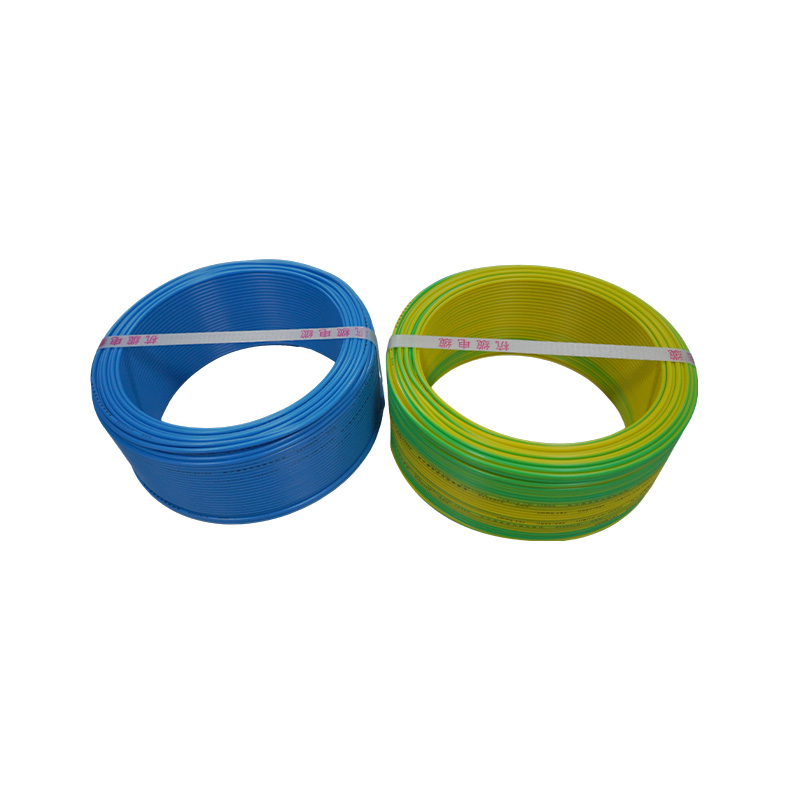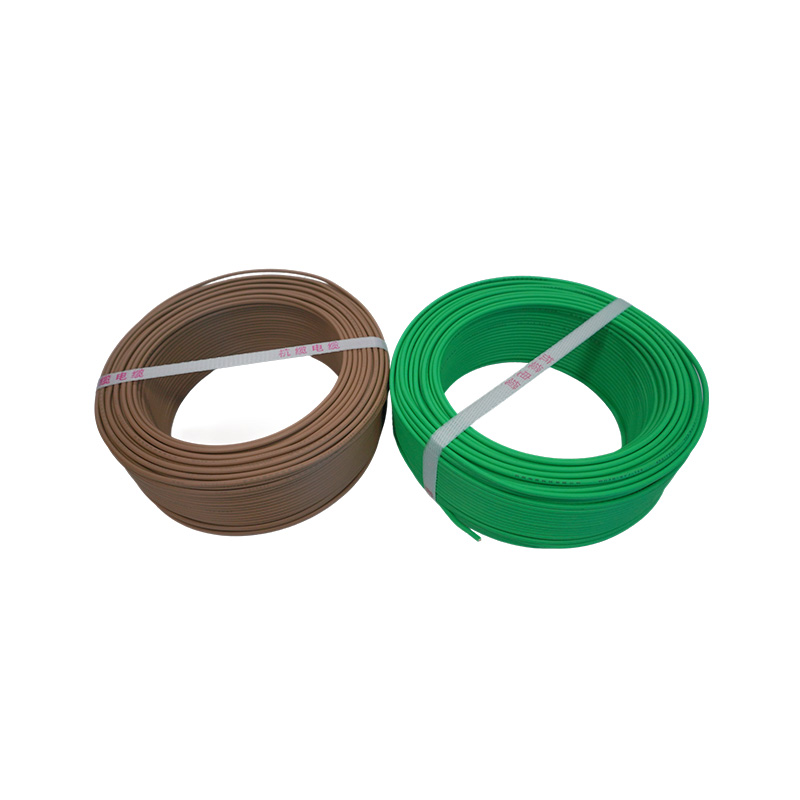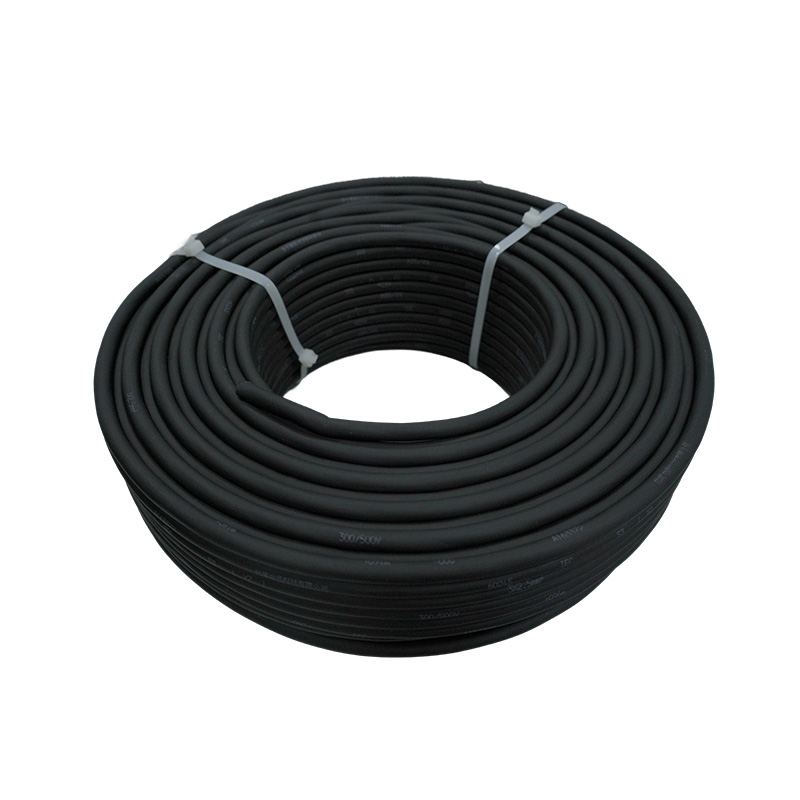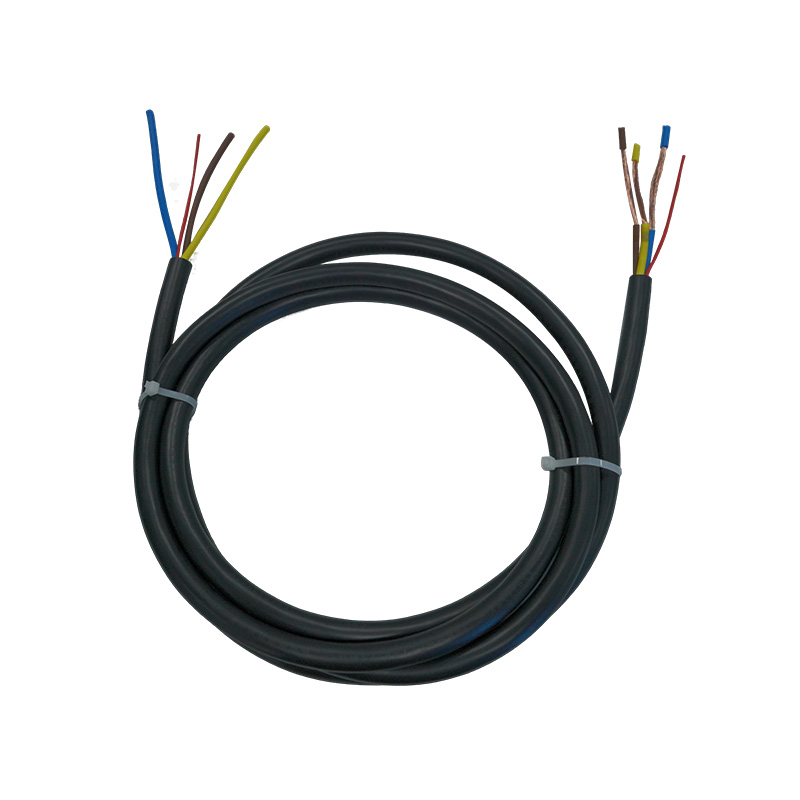How to improve the reliability of your power system by using cross-linked polyolefin insulated wire?
Release Time : 2025-07-09
In the field of modern electrical engineering, ensuring the reliability and safety of power systems is crucial. Whether it is a residential building, commercial facility or industrial project, choosing the right wire material plays a key role in improving the performance and service life of the entire system. As a high-performance cable solution, cross-linked polyolefin (XLPE) insulated wire has become an ideal choice for improving the reliability of power systems due to its excellent electrical properties, mechanical strength and environmental resistance.
1. Superior electrical performance
Cross-linked polyolefin insulated wire has significant electrical advantages over traditional PVC insulated wire. First, the XLPE material undergoes a special chemical treatment to form a three-dimensional network structure between the molecular chains, which greatly improves the dielectric strength of the material. This means that at the same voltage level, XLPE insulated wire can withstand higher operating voltages without breakdown. This high dielectric strength not only enhances the safety of the system, but also allows designers to choose finer conductors during the design process, thereby saving costs. In addition, the high volume resistivity of XLPE insulation reduces the risk of current leakage. This helps to keep the current in the circuit flowing steadily and avoid energy loss or safety hazards caused by leakage. Especially in humid environments, good insulation performance is particularly important because it can effectively prevent short-circuit failures caused by moisture intrusion.
2. Excellent heat resistance and long life
Another notable feature is that XLPE insulated wires have excellent heat resistance. Traditional PVC insulation materials can usually only operate normally within an operating temperature range of 70°C to 90°C, while XLPE can withstand temperatures up to 125°C or even higher. This means that even if it works for a long time in a high temperature environment, XLPE insulated wires will not age and become brittle, thus ensuring the long-term stability of the power system. Due to its excellent heat resistance, XLPE insulated wires are suitable for various application scenarios that need to withstand high temperatures, such as solar photovoltaic systems, motor windings, etc. At the same time, this material is not easily affected by temperature changes, and can maintain stable physical and electrical properties even under extreme temperature differences, further improving the reliability of the system.
3. Strong mechanical protection and tensile resistance
In addition to electrical properties, XLPE insulated wires also exhibit excellent mechanical properties. It has high tensile strength and wear resistance, and can resist external pressure and friction damage during installation. This is especially important for cables laid underground or exposed to the external environment, as these places are more susceptible to physical damage. In addition, XLPE materials have good flexibility, are easy to bend and route, and adapt to complex routing requirements. Even in a narrow space, cable laying can be easily completed, reducing construction difficulty and improving work efficiency. More importantly, this combination of flexibility and high strength allows XLPE insulated wires to maintain structural integrity in the face of earthquakes or other natural disasters, reducing power outages caused by cable breakage.
4. Excellent environmental adaptability
When facing harsh natural conditions, XLPE insulated wires also show extraordinary performance. It has good waterproof and moisture-proof properties, and will not absorb moisture and expand even if it is in a humid environment for a long time, thus avoiding the problem of insulation performance degradation caused by moisture intrusion. In addition, XLPE materials also have a certain UV resistance, which can resist the aging effect caused by direct sunlight and extend the service life of the cable. For facilities located in coastal areas or near chemical parks, corrosion resistance is also one of the important criteria for measuring cable quality. XLPE insulated wires have good resistance to chemical substances such as acids, alkalis and salts, and are not easily corroded and damaged, ensuring the continuous and stable operation of the power system in harsh environments.
In summary, by using cross-linked polyolefin insulated wire, the reliability of the power system can be significantly improved in many aspects. Whether from electrical performance, heat resistance, mechanical protection to environmental adaptability, or considering long-term cost-effectiveness, XLPE insulated wires have shown incomparable advantages. For various engineering projects that pursue high-quality and high-efficiency power transmission, it is a rare ideal choice.
1. Superior electrical performance
Cross-linked polyolefin insulated wire has significant electrical advantages over traditional PVC insulated wire. First, the XLPE material undergoes a special chemical treatment to form a three-dimensional network structure between the molecular chains, which greatly improves the dielectric strength of the material. This means that at the same voltage level, XLPE insulated wire can withstand higher operating voltages without breakdown. This high dielectric strength not only enhances the safety of the system, but also allows designers to choose finer conductors during the design process, thereby saving costs. In addition, the high volume resistivity of XLPE insulation reduces the risk of current leakage. This helps to keep the current in the circuit flowing steadily and avoid energy loss or safety hazards caused by leakage. Especially in humid environments, good insulation performance is particularly important because it can effectively prevent short-circuit failures caused by moisture intrusion.
2. Excellent heat resistance and long life
Another notable feature is that XLPE insulated wires have excellent heat resistance. Traditional PVC insulation materials can usually only operate normally within an operating temperature range of 70°C to 90°C, while XLPE can withstand temperatures up to 125°C or even higher. This means that even if it works for a long time in a high temperature environment, XLPE insulated wires will not age and become brittle, thus ensuring the long-term stability of the power system. Due to its excellent heat resistance, XLPE insulated wires are suitable for various application scenarios that need to withstand high temperatures, such as solar photovoltaic systems, motor windings, etc. At the same time, this material is not easily affected by temperature changes, and can maintain stable physical and electrical properties even under extreme temperature differences, further improving the reliability of the system.
3. Strong mechanical protection and tensile resistance
In addition to electrical properties, XLPE insulated wires also exhibit excellent mechanical properties. It has high tensile strength and wear resistance, and can resist external pressure and friction damage during installation. This is especially important for cables laid underground or exposed to the external environment, as these places are more susceptible to physical damage. In addition, XLPE materials have good flexibility, are easy to bend and route, and adapt to complex routing requirements. Even in a narrow space, cable laying can be easily completed, reducing construction difficulty and improving work efficiency. More importantly, this combination of flexibility and high strength allows XLPE insulated wires to maintain structural integrity in the face of earthquakes or other natural disasters, reducing power outages caused by cable breakage.
4. Excellent environmental adaptability
When facing harsh natural conditions, XLPE insulated wires also show extraordinary performance. It has good waterproof and moisture-proof properties, and will not absorb moisture and expand even if it is in a humid environment for a long time, thus avoiding the problem of insulation performance degradation caused by moisture intrusion. In addition, XLPE materials also have a certain UV resistance, which can resist the aging effect caused by direct sunlight and extend the service life of the cable. For facilities located in coastal areas or near chemical parks, corrosion resistance is also one of the important criteria for measuring cable quality. XLPE insulated wires have good resistance to chemical substances such as acids, alkalis and salts, and are not easily corroded and damaged, ensuring the continuous and stable operation of the power system in harsh environments.
In summary, by using cross-linked polyolefin insulated wire, the reliability of the power system can be significantly improved in many aspects. Whether from electrical performance, heat resistance, mechanical protection to environmental adaptability, or considering long-term cost-effectiveness, XLPE insulated wires have shown incomparable advantages. For various engineering projects that pursue high-quality and high-efficiency power transmission, it is a rare ideal choice.







